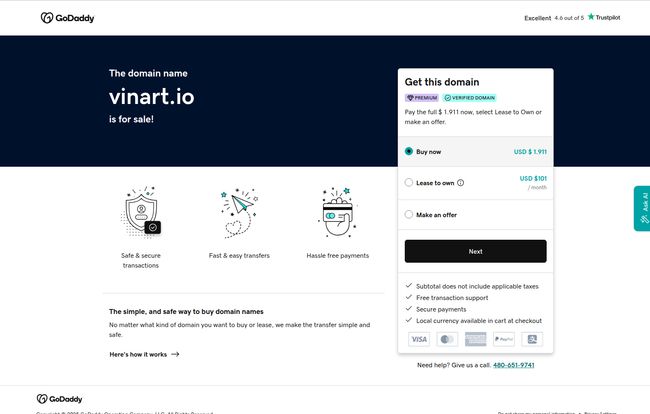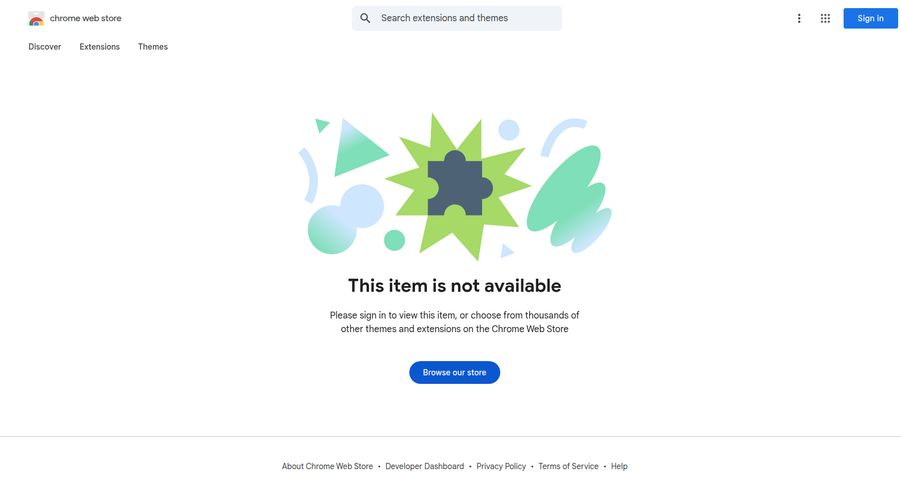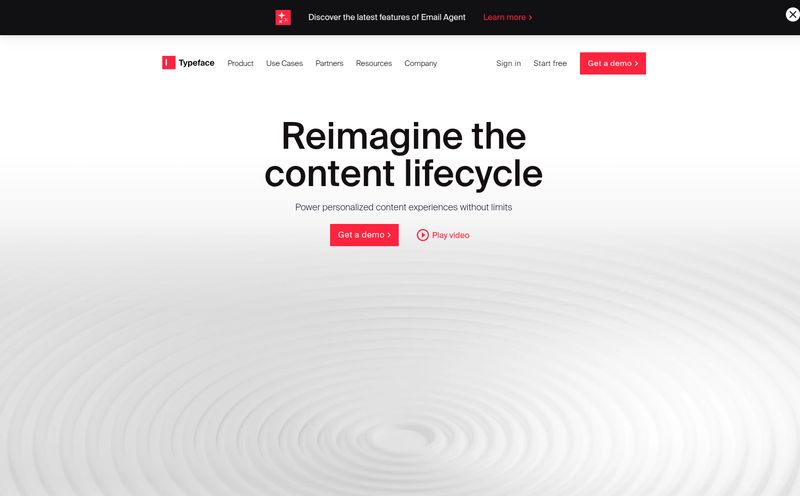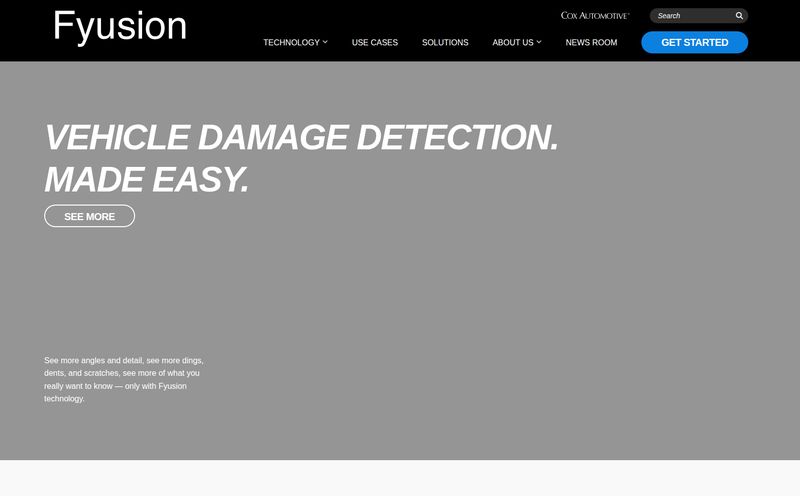You know how it is. As someone who’s been neck-deep in the SEO and digital trends world for years, you get used to seeing new tools pop up every single day. Especially in the AI space. It feels like a new AI art generator is born every thirty seconds, each one promising to be the next Midjourney or DALL-E. It's a full-on gold rush, and I'm always panning for the next big thing.
So, a little birdie chirped about a tool called Vinart.io AI. The description sounded promising: a user-friendly, versatile platform turning simple text into stunning visuals. Perfect for pros, perfect for hobbyists. My interest was piqued. I grabbed my coffee, cracked my knuckles, and typed the URL into my browser, ready to take it for a spin.
And I hit a brick wall. Not a 404 error, not a server timeout. Something much, much stranger. A GoDaddy landing page.
The domain name vinart.io is for sale!
Wait, what? A revolutionary AI tool one minute, a premium domain listing the next? It was like showing up to a grand opening only to find a for-lease sign on the door. This wasn't just a review anymore; it was a mystery. So, what on earth was Vinart.io, and what happened to it?
What Was Vinart.io Supposed to Be?
Scraping together the digital breadcrumbs left behind, a picture of Vinart.io emerges. It wasn't just another half-baked idea. It was marketed as a fully-fledged AI image generator designed to be incredibly accessible. The core idea was simple, yet powerful: you type what you want to see, and the AI brings it to life. Think "a cyberpunk fox sipping espresso in a rainy Tokyo alley" and poof, you have your masterpiece.
The platform was aimed at a broad audience, from marketing professionals needing quick, custom visuals for a campaign, to photographers wanting to create conceptual art, to someone like you or me just wanting to see what a 'cosmic owl wearing a monocle' looks like. The promise was creative power without the steep learning curve of tools like Photoshop or even some of the more complex AI prompters.
The Promised Features That Caught My Eye
Digging into its feature list, you can see why it generated some buzz. It wasn't just about basic text-to-image generation. It promised a suite of tools that showed some real thought went into its design.
- Customizable Styles and Colors: This is a big one. Instead of being stuck with a single 'AI look,' users were meant to be able to guide the aesthetic. Want something photorealistic? You got it. Prefer a watercolor style, or maybe something painterly and impressionistic? Vinart.io was supposed to deliver that kind of artistic control.
- Developer Integration: This is what separates a toy from a tool. By offering an API, Vinart.io was signaling to the tech community that it wanted to be a building block in other applications. Imagine a blogging platform with a built-in Vinart.io feature to generate post images, or an e-commerce site that could auto-generate product lifestyle shots. The potential was huge.
- Multi-Language Support: A simple but critical feature for global reach. Art is a universal language, and the tool to create it shouldn't be limited by English prompts.
- Privacy and Security: In an age of data leaks and privacy concerns, explicitly stating this as a priority is a smart move. People want to know their creative ideas (and data) are safe.

Visit Vinart.io
The Good, The Bad, and The... Missing?
Every tool has its strengths and weaknesses, and from the information available, Vinart.io was no different. It’s like a character profile for a hero who never made it on screen. Here's how it stacked up, hypothetically.
| The Supposed Advantages | The Acknowledged Hurdles |
|---|---|
| Super user-friendly interface. A huge plus for mass adoption. | Complex requests might have been a struggle for the AI. |
| Versatile art generation for different needs. | Potential limitations on true, out-of-the-box AI creativity. |
| Focus on privacy was a great selling point. | Well, the biggest hurdle... it doesn't seem to exist anymore. |
Honestly, the pros list is exactly what you'd want to see. The cons are pretty standard for most AI generators, even the big players. Getting an AI to understand the really weird, nuanced, or complex prompts is still the final frontier. You know, stuff like getting the right number of fingers on a hand—a classic AI fumble.
So, What's the Deal with the Domain?
This brings us back to the elephant in the room. The GoDaddy page. The domain vinart.io is listed for a cool $1,911, or you can lease it for $101 a month. This tells us a few things. First, the original owners let the domain registration lapse, or they're actively trying to sell it. Either scenario doesn't bode well for the platform's existence.
Why does this happen? It's the digital graveyard story we've seen a thousand times. A team has a brilliant idea, maybe even builds a working prototype, but they run out of funding. Or they hit an insurmountable technical snag. Or maybe a key founder leaves, and the project just loses steam. The AI space is incredibly competitive and expensive—the computing power required to run these models is no joke. It's a wild west out there, and not every prospector strikes gold.
It could also be a 'pivot'. The team might have decided their tech was better suited for a different purpose and abandoned the Vinart brand. Or, in the most cynical take, it was never a real project to begin with—just a concept to flip a premium-sounding domain. I doubt that, given the detail in the project description, but you can never be too sure.
Is There a Future for Vinart.io? Or a Lesson for Us?
Unless someone swoops in and pays that $1,911 with a plan to resurrect the project, I think it's safe to say Vinart.io as we knew it (or, rather, as it was described) is a ghost. But its story is a fantastic lesson for anyone in the tech and marketing space.
It highlights the sheer volatility of the AI startup world. For every tool that makes it, how many more end up on a GoDaddy sales page? It's a stark reminder to not get too attached to a single, brand-new, unproven tool. Always have backups. If you're building a workflow around an AI service, make sure it's one with solid footing and a clear business model.
The tale of Vinart.io is a cautionary one. It’s a snapshot of a great idea that, for whatever reason, didn't cross the finish line. It had the right buzzwords, the right features, and the right approach, but it lacked the one thing that matters most: staying power.
Your Questions About Vinart.io, Answered
What was Vinart.io AI?
Vinart.io AI was meant to be an AI image generation platform that created visual art from text prompts. It was designed to be user-friendly with customizable styles, catering to both creative professionals and casual users.
Why can't I access the Vinart.io website?
Because the domain name vinart.io is currently listed for sale on GoDaddy. This indicates the original project is no longer active and the owners have either let the domain expire or are actively trying to sell it.
What were the main features of Vinart.io?
Its key advertised features included text-to-image generation, customizable art styles and colors, API access for developer integration, multi-language support, and a strong focus on user privacy and security.
Are there good alternatives to Vinart.io?
Absolutely. The AI art space is booming. Some of the most popular and robust alternatives include Midjourney (known for its high-quality, artistic output), OpenAI's DALL-E 3 (great for its integration with ChatGPT and natural language understanding), and Stable Diffusion (an open-source option for those who want more control).
How much did the vinart.io domain cost?
As of this writing, the domain is listed for a 'Buy now' price of $1,911 or a lease option of $101 per month on GoDaddy.
Is it common for AI tools to disappear like this?
Unfortunately, yes. The tech startup world, especially in a hot-and-heavy field like AI, is very fast-moving. Many projects run out of funds, face technical challenges, or get acquired and shut down. It's a pretty common part of the industry lifecycle.
A Digital Ghost Story
So there you have it. The strange, short story of Vinart.io. It's a perfect little fable for our current tech moment—a story of huge ambition, promising features, and an unceremonious end on a domain auction block. It serves as a great reminder that for all the hype, the digital world is ephemeral. Ideas are a dime a dozen, but execution and endurance are everything.
While I'm sad I never got to prompt Vinart.io to create 'a sad robot looking at a domain for sale page,' its story was a fascinating rabbit hole to fall down. On to the next tool, I guess. The gold rush continues.
Reference and Sources
Vinart.io Domain Listing: GoDaddy Auctions
OpenAI's DALL-E 3: openai.com/dall-e-3
Midjourney: www.midjourney.com



